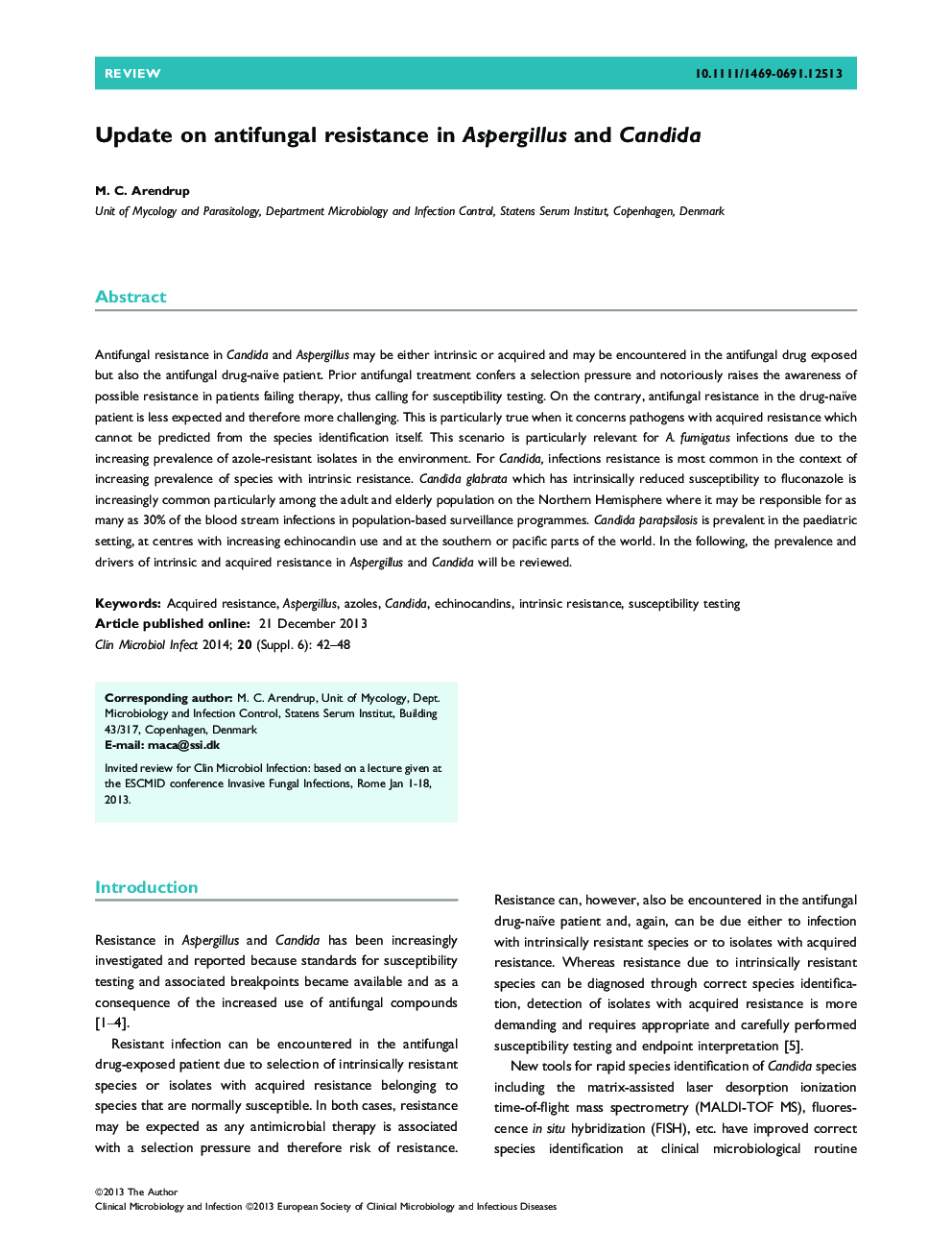| Article ID | Journal | Published Year | Pages | File Type |
|---|---|---|---|---|
| 3396677 | Clinical Microbiology and Infection | 2014 | 7 Pages |
Antifungal resistance in Candida and Aspergillus may be either intrinsic or acquired and may be encountered in the antifungal drug exposed but also the antifungal drug-naïve patient. Prior antifungal treatment confers a selection pressure and notoriously raises the awareness of possible resistance in patients failing therapy, thus calling for susceptibility testing. On the contrary, antifungal resistance in the drug-naïve patient is less expected and therefore more challenging. This is particularly true when it concerns pathogens with acquired resistance which cannot be predicted from the species identification itself. This scenario is particularly relevant for A. fumigatus infections due to the increasing prevalence of azole-resistant isolates in the environment. For Candida, infections resistance is most common in the context of increasing prevalence of species with intrinsic resistance. Candida glabrata which has intrinsically reduced susceptibility to fluconazole is increasingly common particularly among the adult and elderly population on the Northern Hemisphere where it may be responsible for as many as 30% of the blood stream infections in population-based surveillance programmes. Candida parapsilosis is prevalent in the paediatric setting, at centres with increasing echinocandin use and at the southern or pacific parts of the world. In the following, the prevalence and drivers of intrinsic and acquired resistance in Aspergillus and Candida will be reviewed.
